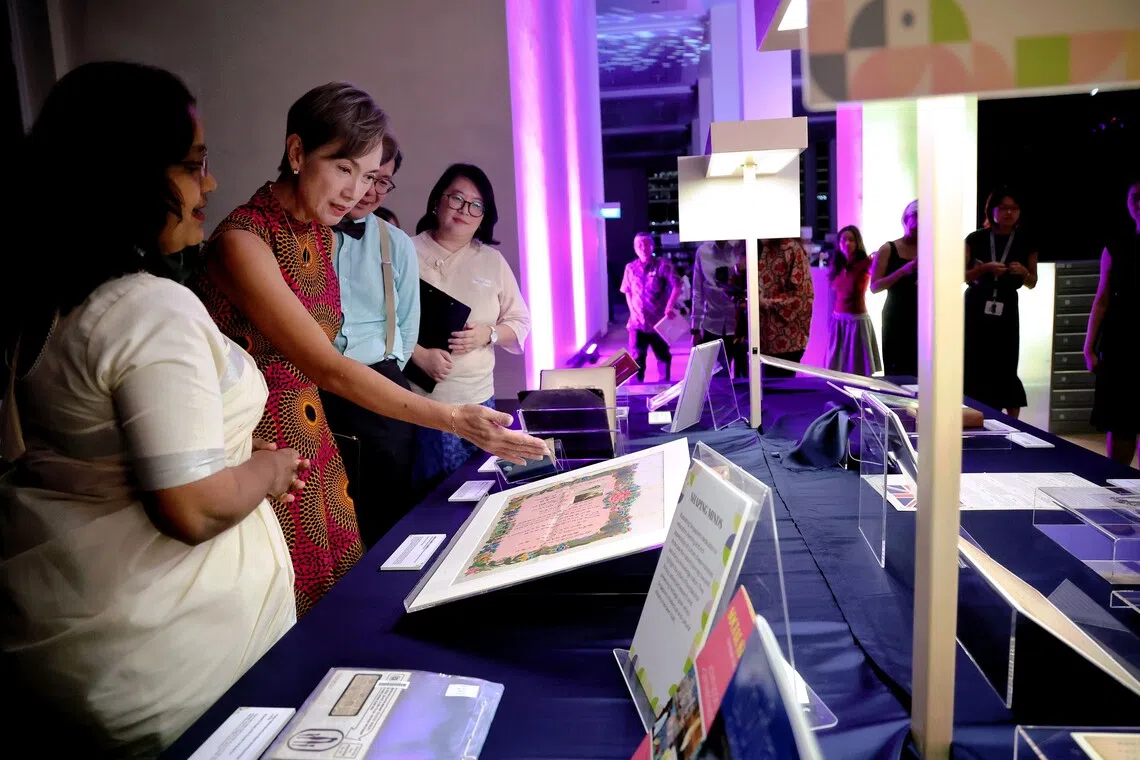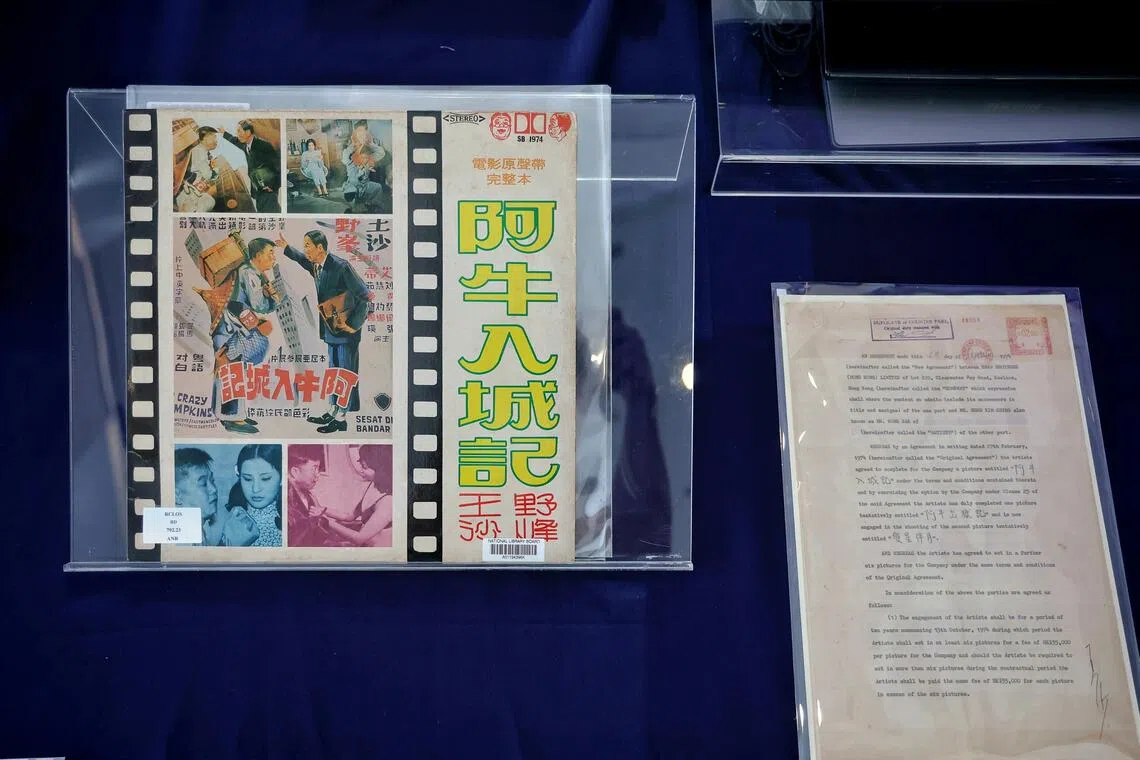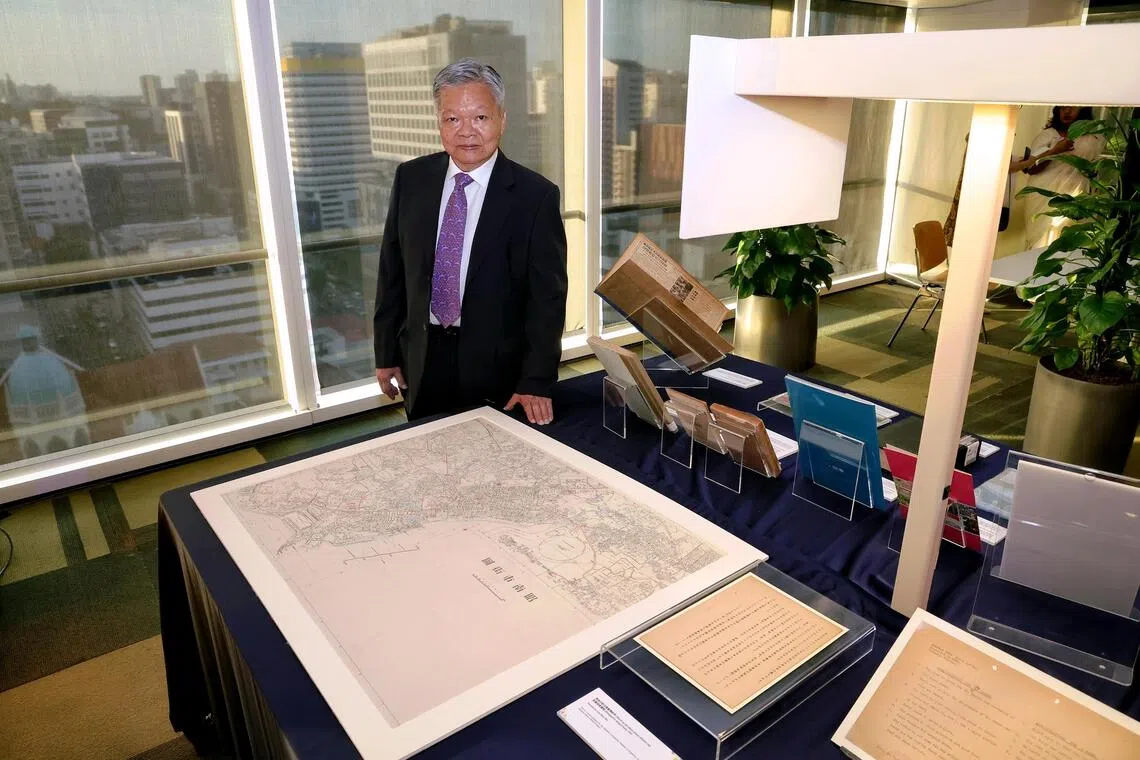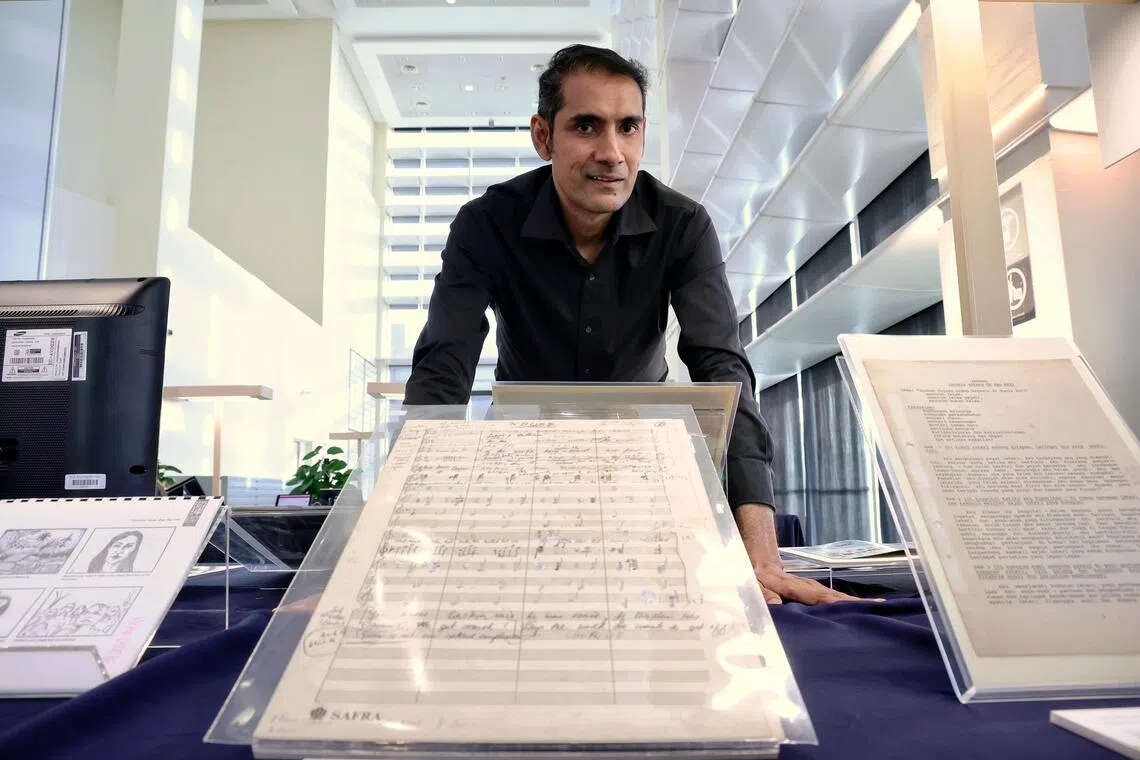Secret notes, declassified documents: Exhibition on S’pore’s independence opens to public on Dec 8
Sign up now: Get ST's newsletters delivered to your inbox

Minister for Digital Development and Information Josephine Teo viewing a marriage certificate of Mr Kok Yew Loong and Ms Wong Pui Wah from 1933.
ST PHOTO: KEVIN LIM
Follow topic:
- Singapore marks 60 years of independence with the Albatross file exhibition to open to public on Dec 8, featuring declassified documents.
- The Albatross file contains handwritten notes and cabinet papers from 1964-1965, detailing Singapore's separation from Malaysia.
- NLB honoured donors, receiving over 3,300 items; it aims to enhance digital accessibility amid growing public demand.
AI generated
SINGAPORE - Once-secret handwritten notes and Cabinet papers by Singapore’s founding leaders will be part of a new permanent exhibition featuring declassified documents from Singapore’s journey to independence.
The exhibition, named The Albatross File: Singapore’s Independence Declassified, will be open to the public from Dec 8 at the National Library Building in Victoria Street. Tickets can be booked online and the exhibition is free.
It is based on an upcoming book titled The Albatross File: Inside Separation.
Both the exhibition and the book will be launched on Dec 7, in commemoration of Singapore’s 60 years of independence and the National Library Board’s (NLB) 30th anniversary.
The Albatross file is a collection of newly declassified documents, handwritten notes and Cabinet papers between 1964 and 1965 compiled by Dr Goh Keng Swee, one of Singapore’s founding fathers. It sheds light on the negotiations leading up to Singapore’s separation from Malaysia in 1965 that Dr Goh played a key role in.
Announcing details of the exhibition at the NLB annual Donors’ Appreciation Night on Oct 24, Minister for Digital Development and Information Josephine Teo said the Albatross file is a significant collection as it captures in detail the deliberations and negotiations leading up to the separation.
“It was a pivotal moment in history that changed the course of our little red dot, and led us to chart our own destiny,” she said.
Visitors to the exhibition will see original artefacts from the Albatross file on display, such as handwritten notes by Dr Goh and founding prime minister Lee Kuan Yew and Cabinet papers which discuss the policy deliberations behind merger and separation.
They can also hear excerpts of oral histories of Dr Goh, Mr Lee, as well as his wife Mrs Lee, which have not been made public previously, said Mrs Teo.
The exhibition is jointly presented by the Ministry of Digital Development and Information and NLB.
It is meant to make the information presented in the book, which has 488 pages, more widely accessible, said Mrs Teo.
The book is organised in three parts.
The first part consists of two historical introductions. One is by Professor Tan Tai Yong, a historian and current president of the Singapore University of Social Sciences, on the lead-up to the merger, while the other is by Associate Professor Albert Lau from NUS’ history department, on the lead-up to the separation.
The second part covers 23 documents from the Albatross file, ranging from half-page memos to 20-page Cabinet papers. These are cross-referenced with documents from that period of time that record the same events, which have also been declassified by other countries.
The third part consists of excerpts from oral histories of Singaporean leaders of that era, including those of Dr Goh and Mr and Mrs Lee.
Mrs Teo also recognised the efforts of the National Archives staff who maintained the Albatross file after it was transferred from the Prime Minister’s Office in 1996. The documents were kept in acid-free archival boxes and stored in environmentally controlled repositories to slow down the deterioration of the paper-based materials, she said.
The staff also meticulously made surrogate microfilms and digital copies to minimise the handling of the original files, she added.
On Oct 24, NLB also honoured donors from the past three decades.
In the past year, almost 100 donors have contributed more than 3,300 items, such as photographs, manuscripts, and audio and video recordings. They join the close to 3,000 donors who have donated more than 328,000 items since NLB became a statutory board 30 years ago.
While much of the heritage collection consists of physical items, NLB must continue to make them digitally accessible to patrons where feasible, said Mrs Teo, noting that the public increasingly consumes information digitally.

A soundtrack (Comedy Songs 1 c.1970) and contract between the late comedian Wang Sar and Shaw Brothers in 1974 on display at the NLB annual Donors' Appreciation Night.
ST PHOTO: KEVIN LIM
The National Reading Habits Study in 2016 found that 41 per cent of adults read at least one digital book, magazine, or article in the past 12 months. In 2024, this figure had increased to 55 per cent, she said.
On average, more than 100,000 records including audio, video, photos, documents and books are accessed annually by the general public, and the demand is growing, she added.
One regular donor is Mr Lim Shao Bin, who contributed 171 items between April 2024 and March 2025. This adds to nearly 1,800 pre-war and wartime Japanese documents, maps, books, newspapers, posters, postcards and other philatelic materials donated by him since 2016.

Mr Lim Shao Bin with a map of Syonan city (left) and a Japanese Commercial Museum report (right) he donated.
ST PHOTO: KEVIN LIM
The retired IT professional told The Straits Times: “NLB has the best hardware for storage, digital accessibility and reaches out to many knowledgeable people. This will ensure that my collection can be made known and accessible to the world.”
Mr Balraj Gopal, associate conductor of NUS Guitar Ensemble, donated 63 items comprising guitar orchestra music scores from the collection of his late teacher and mentor Alex Abisheganaden. Among them were four pieces composed by Mr Abisheganaden, while the rest were arrangements composed by other musicians.

Mr Balraj Gopal and the music score titled WOUND (Weapons of Ulterior Nuclear Destruction), which he donated.
ST PHOTO: KEVIN LIM
“There were original, handwritten items that were too precious, so I decided to hand them over to NLB for safekeeping,” the 53-year-old said. “As Mr Abisheganaden was also an educator, I believe this would also enable others to study them online.”
NLB chief executive Ng Cher Pong said the donations have enriched Singapore’s collective understanding of the Singapore story.
Marking his final public event as NLB’s CEO


